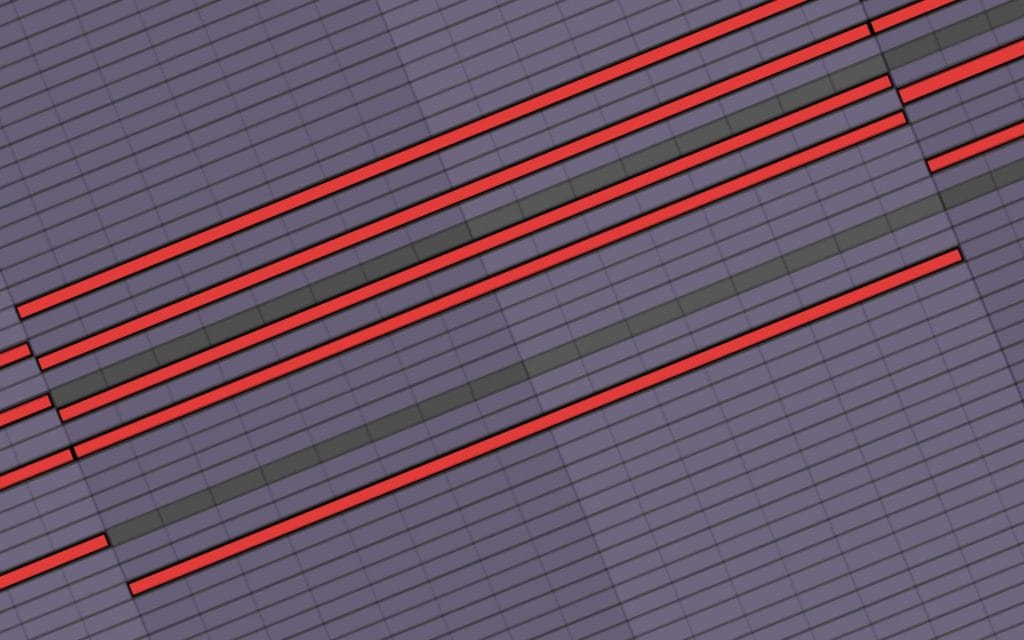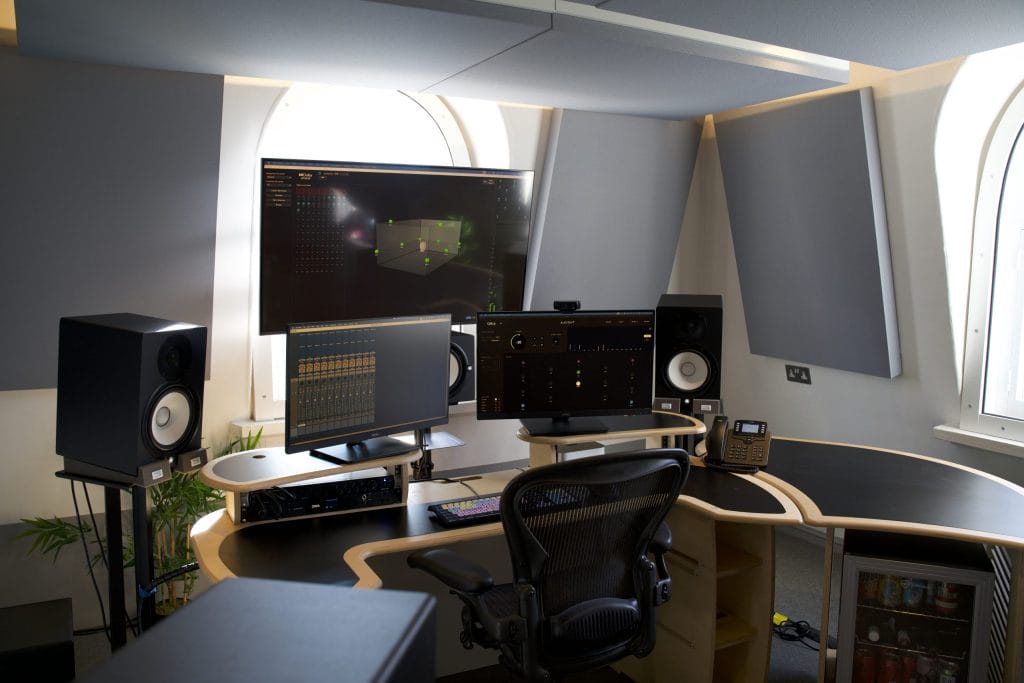Producing music at home has become more accessible than ever. With the right tools and approach, you can start creating tracks on your laptop using a straightforward process that builds skills over time.
I have worked with many new producers who want to learn how to start producing music at home. I know that progress becomes possible once you understand fundamentals, build consistent habits, and learn from others. This guide lays out the steps that matter. Where relevant, I draw on insights from working professionals we’ve interviewed over the years here at Magnetic!
The Workflow At A Glance
Step 1: Pick a Digital Audio Workstation That Supports Your Growth
Your DAW shapes your workflow, arrangement style, editing process, and sound design. Among the top options, I recommend Ableton Live for beginners. Ableton receives frequent updates and continues to introduce tools that match how modern producers work. The interface is clean and intuitive, and the stock plugins often cover everything you need at the start. That reduces dependency on complicated third-party plugin stacks. You can handle composition, sound design, arrangement, and mixing inside the box with consistent tools that reinforce good habits.
Many producers I speak with echo this view, too and Ableton’s DAW is one of the most talked about DAWs in our How It Was Made series of editorial.
But similar thoughts are said in long-form interviews as well! VIZANO, in a recent interview he did with me, said that when he moved into production, he “started using Ableton Live” because its workflow felt intuitive. He described his creative process as beginning with drums, melody, or vocals, then building around those main elements — a workflow that is highly compatible with Ableton’s clip- and loop-based architecture.
If you are uncertain which DAW to begin with, try a few trials. Build a simple loop or arrangement in each. If one feels natural, stay with it long enough to build muscle memory.
Snag Ableton Live Here
Step 2: Set Up a Simple Home Studio That Lets You Work Regularly

You do not need a full studio to begin producing. A small, focused setup often serves new producers better because it reduces distraction and complication. I recommend starting with:
- a computer that runs your DAW smoothly
- a reliable pair of studio headphones
- a compact MIDI keyboard

Studio monitors can come later once you understand your workflow. Headphones often provide a more predictable signal because many rooms color frequencies unevenly, making mix decisions difficult. A good set of headphones in the $250–$300 range can last for many years. If you pair them with a calibration tool such as IK Multimedia’s headphone-correction ARC On-Ear, you can get a more neutral listening reference. That increases confidence in your mix decisions.
A MIDI keyboard speeds up composition, melody writing, and arrangement compared with drawing notes manually in a piano roll. This small step removes friction early and lets you focus on creativity rather than technical navigation.

Step 3: Learn the Fundamentals That Influence Every Track You Create

Music production has many layers: arrangement, chord progressions, rhythm, sound selection, mixing techniques. You do not need deep music-theory knowledge to start. Many producers build effective tracks using a handful of reliable chord progressions.
In practice, structured learning helps a lot.
When you follow a process, you avoid early mixing and arrangement mistakes that stall progress. Feedback from experienced producers, clear lessons, and working through focused projects speed up learning.
I heard from mölly recently that early in her production journey, she prioritized experimentation and gradually developed her sound through consistent work and personal growth. She said trends come and g,o but a sound rooted in authenticity lasts longer.
This approach lets you build a foundation that supports any genre. Whether you aim for house, ambient, techno, or songwriting, fundamentals like balance, arrangement, and clarity carry through.
Having a small but effective sample pack library will also help. Luckily, we made one with Black Octopus, and it’s completely free! Check it out here
Step 4: Build Consistency Through Daily Creative Habits
Consistency matters more than occasional long sessions. Writing music for 30 minutes every day trains your ear, boosts speed, and builds familiarity with your tools. Small regular sessions reduce burnout and keep momentum.
Some artists I’ve spoken to treat production as part of their lifestyle rather than a sprint. The mindset on instruments like the guitar or the piano reflects this. Music becomes a creative outlet rather than a milestone-chasing exercise. That outlook helps early producers appreciate the process rather than fixate on big goals like hit records or festival slots.
When you build songs frequently—even if they feel rough or incomplete—you develop muscle memory for editing, arrangement, and sound selection. You also build resilience against perfectionism, which can stall early progress.
Here’s a great video on the topic that also has some other great bits of sauce as well!
Step 5: Join a Community That Supports Your Development
Feedback and community accelerate growth. When you listen to your own work for too long you lose objectivity. Sharing tracks with others helps you catch problems and see what aspects work well.
Large public forums or open-call feedback threads often deliver shallow responses. Instead seek smaller, tight-knit communities — specialist forums, Discord groups, local collectives, or structured course cohorts. Those environments tend to produce constructive feedback and honest critique, not just surface-level praise.
For example SUBSHIFT recently described his process around collaboration and feedback. In our interview with him he emphasized how creative momentum often emerges from sharing work, listening to others, and remaining open to shifts in approach.
Collaborating with other producers or musicians helps you build experience quickly by learning different creative workflows, problem-solving techniques, and arrangement habits. Over time this feedback loop shapes both taste and technique.
Step 6: Maintain Steady Momentum When Progress Slows
Creative blocks and slow periods are part of any production journey. Growth often arrives slowly and quietly. The important part is to continue creating, refining, and exploring even when results feel small.
Artists grow when they move forward consistently. With each session you build confidence in your decisions. Tools become familiar. Mistakes become lessons. Progress might feel slow but it is happening.
Many professional producers report that over time, their inner sense of listening and taste evolves. For instance, SIDEPIECE pointed out recently that after years of producing and playing music, they learned to shift from hyper-analytical listening to more holistic, emotion-driven listening. That change influenced how they approach creation and how they decide what music to release.
This shift reflects long-term growth. Once you learn to trust your ears and your instincts, production becomes more intuitive and creative output becomes more meaningful.
FAQs about how to start producing music at home
Do I need expensive equipment to start producing music at home?
No. A reliable computer, a good DAW, headphones, and a small MIDI keyboard can cover your early production needs.
Which DAW works best for beginners?
Based on experience and input from working producers, Ableton Live offers a workflow that is intuitive, well-supported, and highly capable for first projects.
Can I learn music production without formal training?
Yes. Many producers learn through experimentation, community feedback, and project-based work. A structured course can accelerate learning, but dedication and practice can lead to strong results.
How long does it take to learn music production?
That depends on how often you practice and how willing you are to learn from mistakes. Many people reach a comfortable working level after several months of consistent effort.
Can home producers build a career today?
Yes. Modern tools, distribution platforms, accessible education, and supportive communities mean that home-based production can lead to professional opportunities.
The post How to Start Producing Music at Home: 6 Easy Steps to Get Started in Music Production appeared first on Magnetic Magazine.






